The Ultimate Guide to Steelhead Fishing Michigan
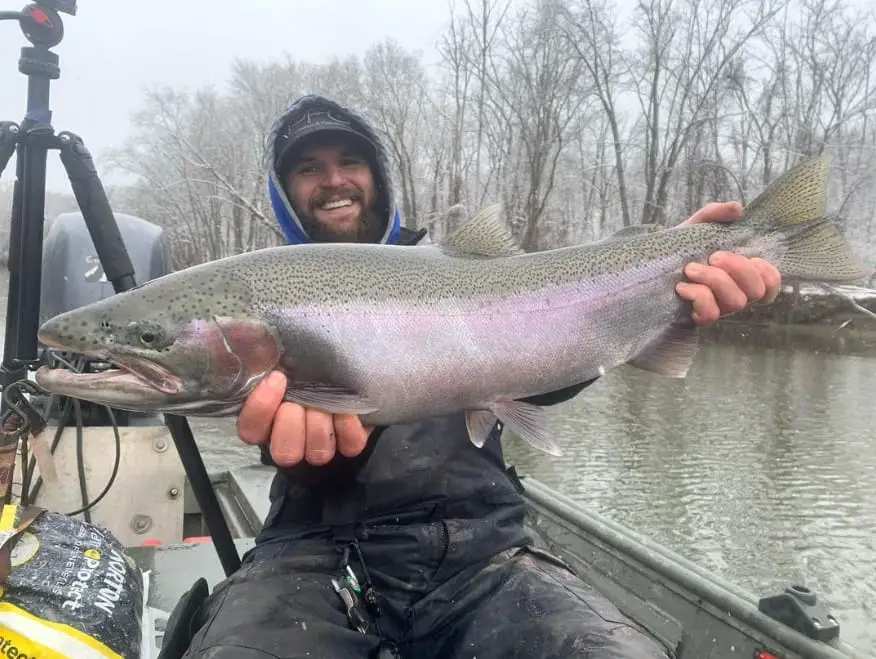
Steelhead fishing in Michigan runs almost twelve months a year, thanks to both winter-run steelhead and summer-run steelhead. There are peak times to fish the rivers and peak times in the lake, and if you follow the advice from our guides, you have a much better chance of hooking up.
Some of the most important things to note are:
- Timing: Guide like me know when the steelhead are in the river, when they are thick, and when they run. Peak times are November and December and March and April.
- Methods: Fly fishing, float fishing, centerpinning, and lures are the most common and effective methods.
- Rivers: There are many small and large rivers in Michigan that get runs of steelhead. Some of the most popular are the Pere Marquette, Manistee, Muskegon, Grand, and St Joseph.
- Baits: Although Michigan Steelhead will grab most baits, the top baits are spawn bags, skein, worms, beads, and flies.
- Gear: When river fishing, the rod will depend on the method, but in general, longer rods of 9 to 13 feet are best, combined with a spinning reel, lines around 8 to 10 pounds, and fluorocarbon leaders of 6 to 10 pounds are best.
- Lake Fishing: Fishing from shore is best in spring and fall, and trolling is best in the summer.
Steelhead Fishing Michigan
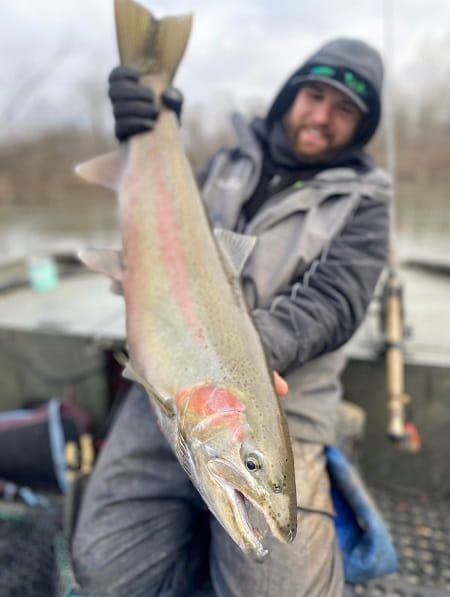
Steelhead were introduced into Lake Michigan through Michigan’s steelhead planting and stocking program in the late 1800s.
Since then, they have adapted well and have become one of the most popular and sought-after game fish in Michigan.
Over the years, the state of Michigan has been able to manage its steelhead populations using various fisheries management efforts such as annual steelhead stocking and regulations. This is done through the Michigan Department of Natural Resources.
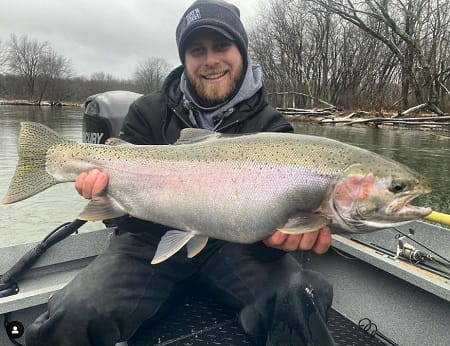
The average adult Michigan steelhead is between 6-7 pounds but can grow to over 20 pounds.
Summer-run steelhead enter select rivers starting in June.
Winter-run steelhead will start entering most rivers in October, peak in November and December, and then more will enter the rivers from March to May.
The Best Michigan Steelhead Rivers
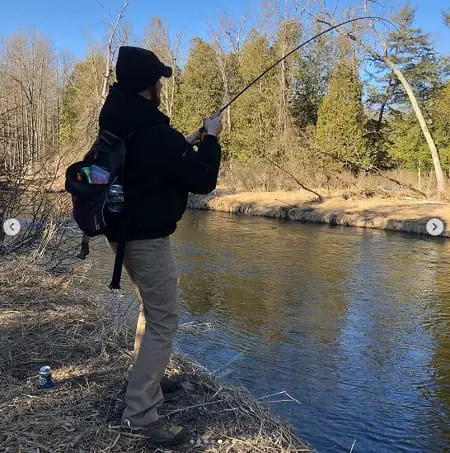
Michigan is nationally known as a quality steelhead fishing destination thanks to its enormous volume of water. This state boasts over 20,000 miles worth of water body with a lot of great rivers home to colossal steelhead runs to explore.
Some of these rivers are considered the best steelhead fisheries in the entire country. Some of the rivers are under 20 feet wide, while others are over 100 feet wide.
Anglers have the option to fish miles of each river from the mouth of the river to the headwaters:
- Big Manistee River
- Muskegon River
- Pere Marquette River
- Grand River
- St. Joseph River
- Two-Hearted River
- Clinton River
- Kalamazoo River
Boat Fishing – April To October
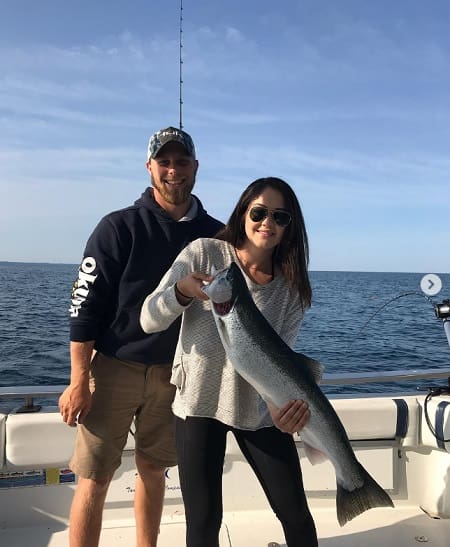
During the summer, most steelhead will be out deep, and therefore, often, your best option is a steelhead charter boat service.
Our contributing guide, Captain Alex Bialik runs Fire Plug Charters in the Western Michigan area. Alex targets steelhead, king salmon, and brown trout out in the lake and in the rivers.
Having a boat or casting from the piers means that anglers can pursue steelhead any time of the year.
River Fishing Season
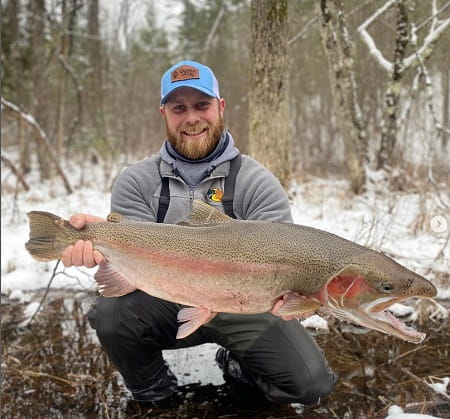
Typically, the river steelhead fishing season in Michigan starts in early fall peaks through the winter, and goes until May.
However, there are Summer-run steelhead available in Michigan rivers as well.
Steelhead also hold and feed differently throughout the season. This depends on the time of year, the river run-off rates, or the water temperature.
Anglers that know how to adapt during these seasons and conditions are those that will end up with the most steelhead.
River Mouths, Piers, and Shores
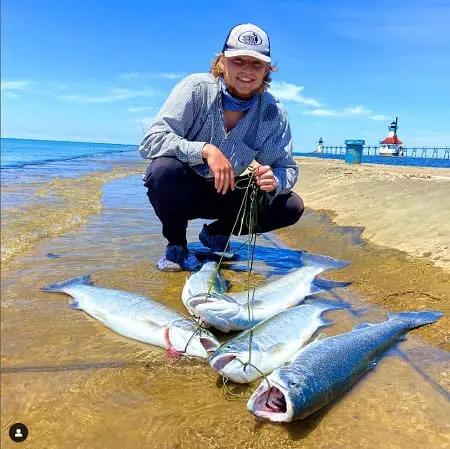
Steelhead fishing at the river mouths, the piers, and the inlets and shorelines of Lake Michigan can be very good fishing at certain times of the year.
There are opportunities for anglers fishing the river mouths and shorelines of Lake Michigan to get into fresh silver and hard fighting steelhead.
It’s these fresh aggressive fish that attract the guys to these areas. These are the steelhead that are said to be the best fish to harvest.
During the spring and fall, the steelhead will often congregate near shore and near the river mouths waiting for ideal river conditions to start moving into the river.
Even in late spring, as steelhead make their way out of the rivers after they have spawned, they will be hungry and will readily eat whatever food they can find, which provides an opportunity for anglers to catch steelhead at the river mouths as these steelhead are leaving the rivers, this happens a lot in April to the end of May.
This is a great time to be casting lures and baits out into the open water of the river mouth and Lake Michigan. Morning and evening are generally always the best times since the steelhead like to start their runs during low light hours. Any time of the year can be good at the river mouths.
Michigan steelhead fishing will slow down in June and July as most steelhead will be further out into the lake.
Fall Run Steelhead In Michigan (September, October, and November)
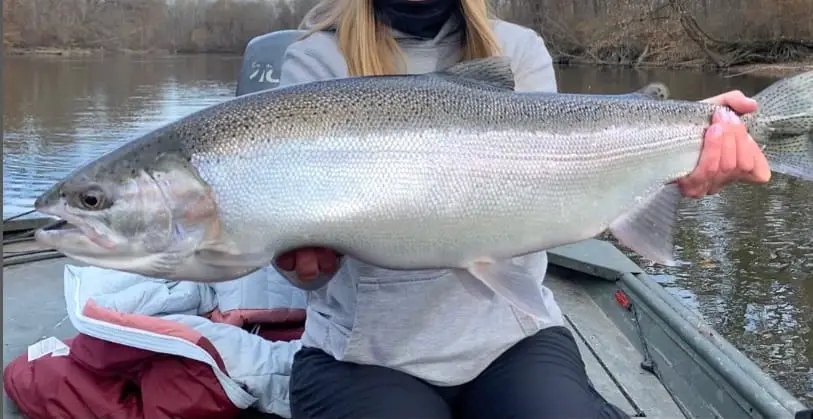
The fall season marks the start of steelhead pouring in from the Great Lakes into Michigan’s west-side tributaries, otherwise known as the spawning migration or the runs.
The fall run usually kicks off by mid-September on most rivers with smaller sporadic runs with what may be considered a summer run steelhead.
The fall season steelhead is characterized by abundant and beautiful colors along the rivers, and aggressive and acrobatic and hard fighting steelhead.
Anglers and river guides prefer to fish during this period because fishing is generally good because the summer and fall run steelhead tend to feed as they move up the river to the spawning ground and when they are holding in the pools and deeper waters.
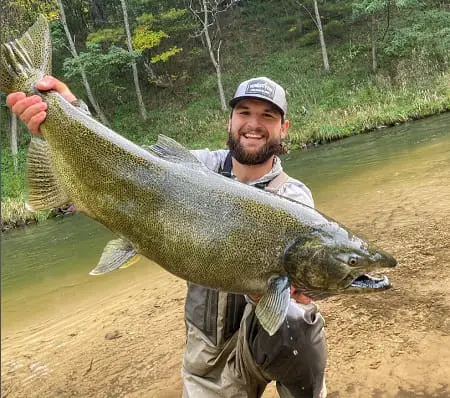
Many steelhead will follow the Chinook and Coho salmon up the river and hold below them, and then feed on any loose eggs.
This is one reason why egg sacs and egg flies can be the most effective option at this time.
The fall steelhead runs only get better, but with better fishing comes crowds in the river. If you are into the salmon fishing, see Salmon Fishing: Methods and Baits.
This happens towards the middle of October and into November when the river gets around 60F after cold rains. At this time, the rivers are usually full of steelhead and anglers.
As it gets colder into late November and December, the steelhead remain in the river, but the crowds slowly disappear.
I break the fall steelhead run into three stages and fish them differently because if I don’t, my clients won’t catch as many fish.
- Stage 1 – (September to Early November). Warmer water stage, with aggressive steelhead that will eat just about anything. Fish will be everywhere and will hold in the same spots for less time.
- Stage 2 – Colder water stage. (Early November to late November), the peak time of day starts to change, and the steelhead will hold in different spots than they did early in the fall. They move through the river at different times of the day and move less often, and fewer sections of the river will hold fish, and those holding spots will change based on the time of day and the water temps.
- Stage 3 – Very cold water stage. (Late November to Late December) Steelhead feed less often, peak times and feeding windows are smaller, migration slows, and fish start stacking up and holding minor near winter locations.
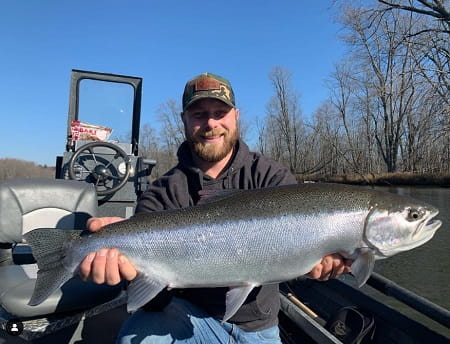
If you are looking forward to fishing for steelhead in Michigan in the fall, I recommend that you take a look at my page Fall Steelhead Fishing: Proven Guide Tips And Tactics.
Recent related articles on Michigan Steelhead fishing:
- Fall Fishing For Michigan Steelhead
- Winter Fishing For Michigan Steelhead
- Michigan Spring Steelhead Fishing
Winter Run Steelhead Fishing in Michigan (December, January, and early March)
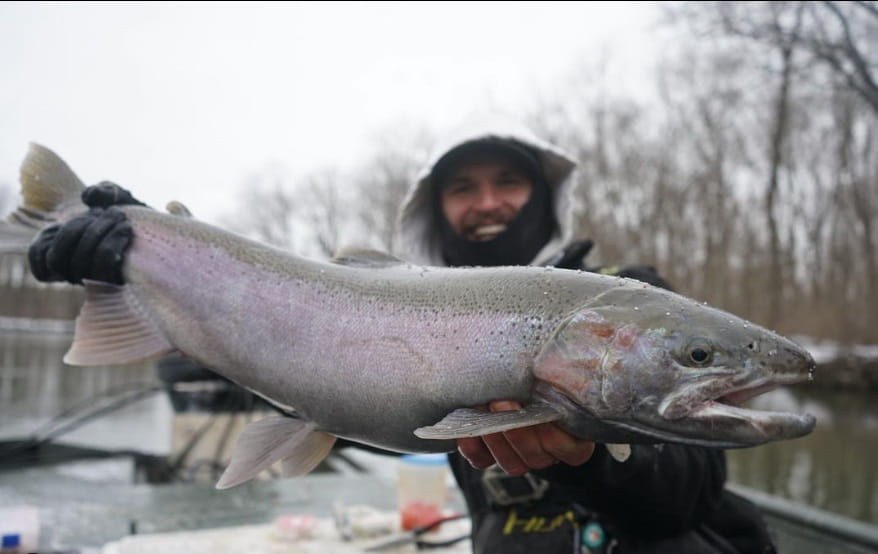
Winter is another great time for Steelhead fishing in Michigan with fewer anglers on the river and with lots of summer and fall run steelhead in the river just holding and waiting for suitable temps to spawn!
Michigan’s winter steelhead fishing starts in December when the river water temps get into the low 40s and high 30s or when the ice starts forming along the river edges.
At this time, the steelhead will start to react differently. Their feeding windows change, their holding spots change, and the baits, lures, and presentations should also change.
There are some sunny winter days that will warm the water a bit, and these days are often the most productive.
Winter steelhead are generally slow and very pragmatic in their movements when the water gets ice cold.
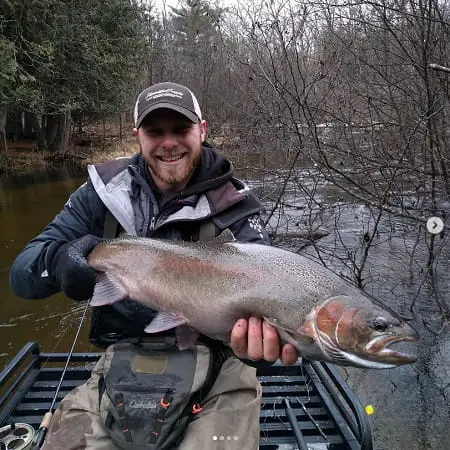
Thanks to the freezing and frigid waters, the steelhead will slow any migration and will hold in deeper, slower water to conserve energy.
This continues to happen till spring approaches and water temps start to rise by a few degrees or more.
During the winter, anglers will need to present their offering in a slow manner in order for the steelhead to have the chance to grab it.
The winter season is also a period characterized by a lack of fishing pressure, and this can make for some peaceful, beautiful days on Michigan’s rivers, but less pressured fish are also more likely to feed.
Good river guides and anglers will adapt and change tactics and baits based on the fish and conditions, and so should you. I discuss the changes that guides make when the steelhead are very cold, on my page, Winter Steelhead Fishing: Tips And Tactics Of Expert Guides.
Michigan Fishing For Spring Run Steelhead (March, April, and May)
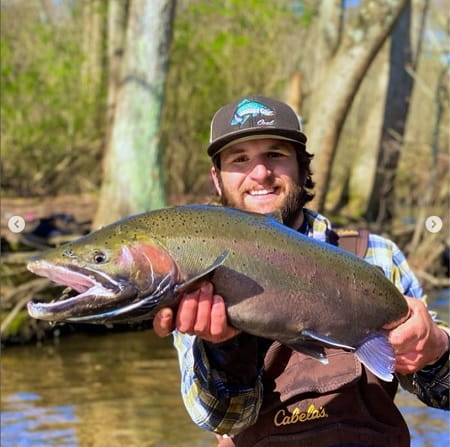
Spring steelhead fishing usually starts in late February or early March, and steelhead can be caught into late May, but the peak season for Michigan steelhead season is March and April.
As the spring approaches, Michigan’s waters gradually begin warming up, and this is when steelhead activity considerably picks up.
Thanks to these warming temperatures, all the steelhead that were holding in deep spots during the winter begin to move, and they will feed until they reach their spawning grounds.
At the same time, Michigan rivers will also see fresh runs of spring steelhead that will start entering the rivers as the waters warm. This is why you will see darker winter fish and bright silver fresh fish in the rivers at the same time.
It’s the rains and snow melt that will increase water levels and drive more steelhead into the rivers, especially on the smaller streams. Once the rivers go from muddy and flooded to greenish and clear, the fishing can be fantastic.
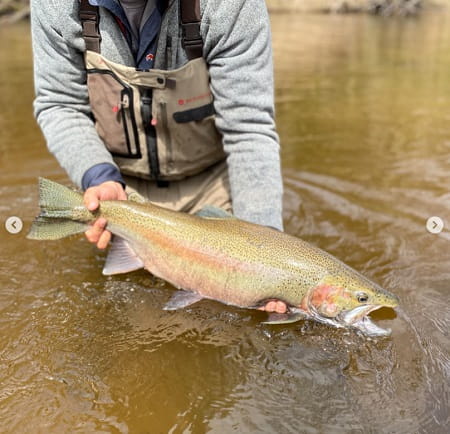
When it comes to Michigan steelhead fishing, many anglers consider this to be the best time of the year for it.
However, that also means that this is the time of the year when Michigan’s steelhead rivers also have the most steelhead and anglers.
Steelhead fishing can be very good for spring steelhead if anglers understand the steelhead and the three stages of the spring steelhead run.
Stage 1 – Steelhead start moving due to warming water and higher water levels.
Stage 2 – The steelhead have moved onto shallower gravel shoals and where to lay eggs. This is the spawn.
Stage 3 – Steelhead complete their spawn and move off the beds to rest or hold in deeper pools and start dropping back to the lake.
Each stage can fish differently, so identifying which stage the steelhead are in and targeting specific steelhead (not the ones on the spawning beds) can greatly increase your chances and help you catch a lot more steelhead.
Spring is also the season when landing some of the biggest steelhead happens.
For detailed tips and tactics, best baits and flies, and how to fish the three stages of spring steelhead runs, which you really should know, check out my page Spring Steelhead Fishing: Tips And Tactics From The Guides.
Summer Steelhead In Michigan: July, August, September
Summer is another time for Michigan steelhead.
Although not as popular because there are not a lot of summer-run steelhead in the river, some anglers know about the summer fishing opportunities on some rivers and where to go to get them.
While many anglers are out chasing steelhead in Lake Michigan and Lake Huron, some anglers are chasing summer-run steelhead in the rivers.
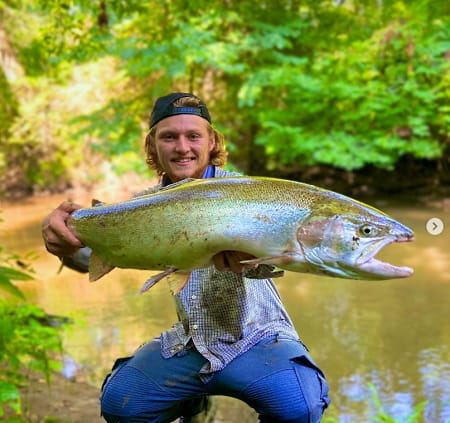
The summer steelhead season in the rivers kicks off in July and is known to receive a push of a unique strain of steelhead known as Skamania, and only a few Michigan rivers are stocked with these steelheads and get a good-sized push of this steelhead.
Summer-run steelhead enter Michigan streams, and they will remain there until early spring when they finish spawning.
Check out my article Summer Steelhead.
Best Methods For Catching Steelhead Michigan
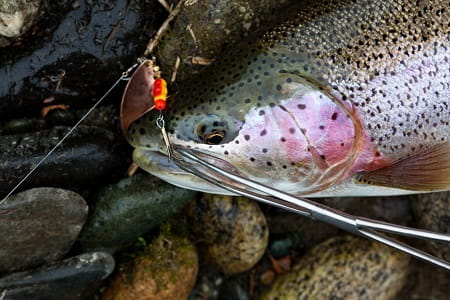
Successful fishing for steelhead in Michigan is largely dependent on the techniques anglers employ when fishing and how well they fish.
There are a variety of techniques for anglers to choose from when steelhead fishing in the rivers of Michigan.
Float Fishing Michigan Steelhead
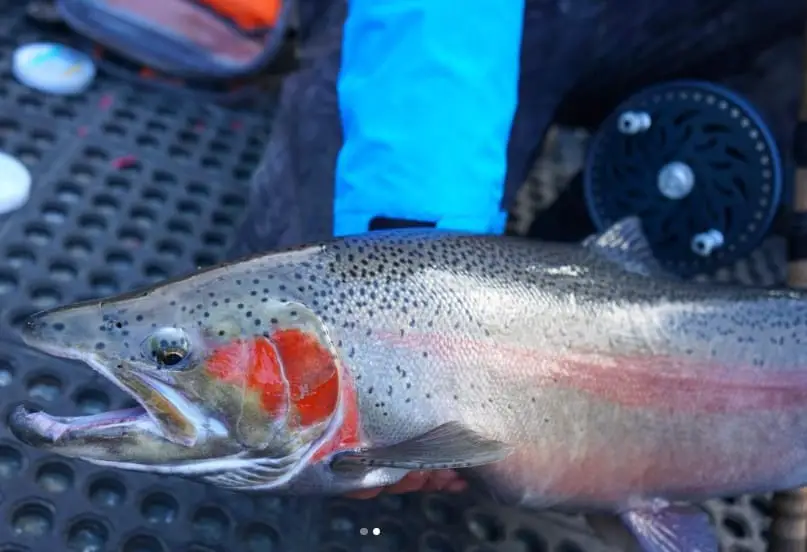
A lot of anglers and guides consider this steelhead fishing method the most effective method for steelhead in Michigan and all around the Great Lakes region. Both our contributing and I spend a lot of time guiding with this method.
Float fishing is very popular and effective if you know how to do it well. As a guide who has been teaching float fishing for over 20 years, I know that doing it well is a skill and doing it well will catch ten times more steelhead.
The float helps to suspend your bait at the desired depth and serves as a bite/strike indicator. The skilled angler will also use the float to control the speed of the bait to make it drift at a more natural pace. Doing so greatly improves your catch rate.
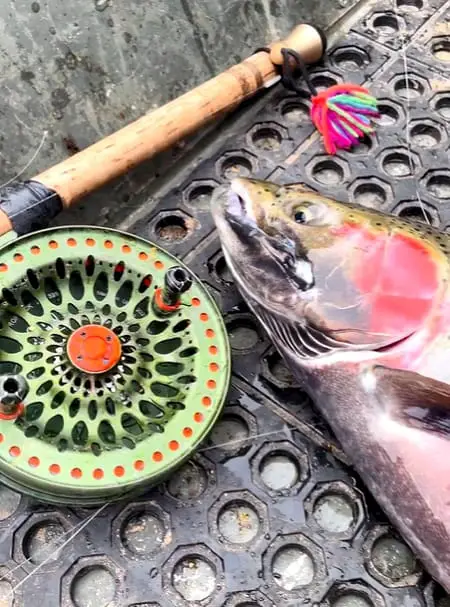
Float fishing can be done with spinning reels, baitcasting reels, and centerpin reels.
My preference is the centerpin reel because I believe it is the most effective method.
I’ve been teaching centerpin fishing for over 20 years and can confidently tell you it’s worth learning.
For expert advice on best float fishing practices, check out my page, Float Fishing: Tips From A Pro River Guide For More Trout.
Fly Fishing Michigan Steelhead
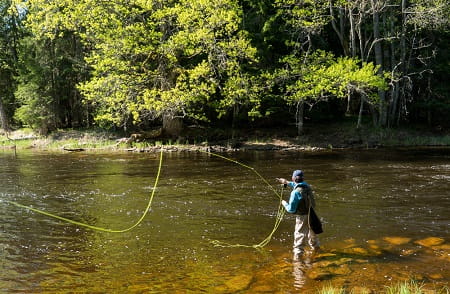
If I’m not float fishing for steelhead, then I’m fly fishing for steelhead.
Flying fishing is likely used by more steelhead fishing guides than any other method. That says something about the effectiveness of this method on steelhead.
There are typically three different ways to fly fish for Michigan steelhead. This includes nymphing, streamer fishing, and Spey fishing or swinging flies.
The choice of which method to employ will depend on the personal preference of the anger. However, some methods will work better based on the type or condition of the river.
Nymphing
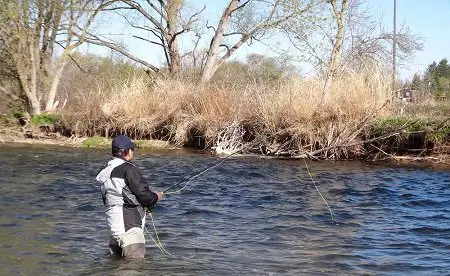
Nymphing for steelhead generally involves presenting your flies below the surface to naturally imitate the steelhead’s food sources.
This is done with the help of an indicator and a long leader or using a tight line method known as Euro Nymphing.
The indicator helps in suspending the flies and indicates subtle bites. This method is best in 3 to 7 feet of water with moderate to fast currents.
Euro Nymphing is best in 1 to 6 feet of water and excels in small pocket water and shallow runs.
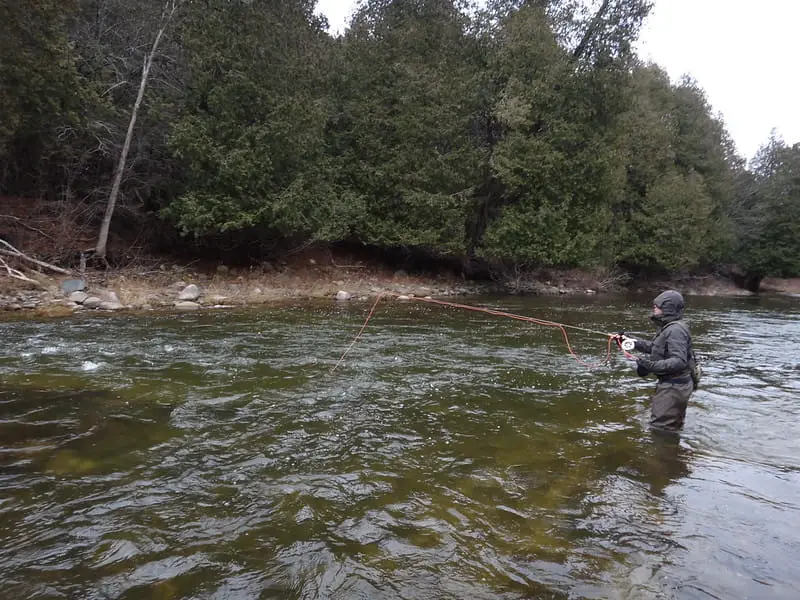
For more on how to nymph for steelhead in the Michigan Rivers, I have an entire page dedicated to discussing the art of nymph fishing for steelhead as well as the best flies and best setup that river guides use.
Check out my page, Nymphing For Steelhead: The 3 Most Effective Methods.
Streamer Fishing
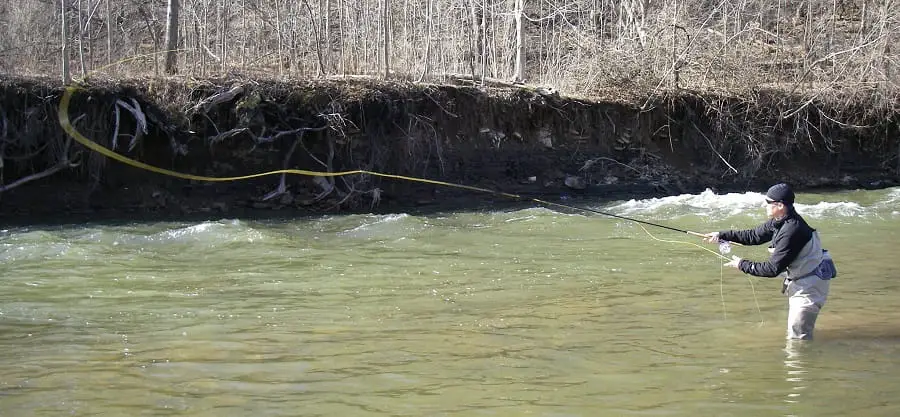
Streamer fishing for steelhead is also effective and can produce a lot of fish in all depths of water.
Anglers will also use this method when casting out in the lake from a boat or from shore and at the river mouths.
For more on this method, including the best flies and setups, see Streamer Fishing For Steelhead.
Spey Fishing: Swinging Flies
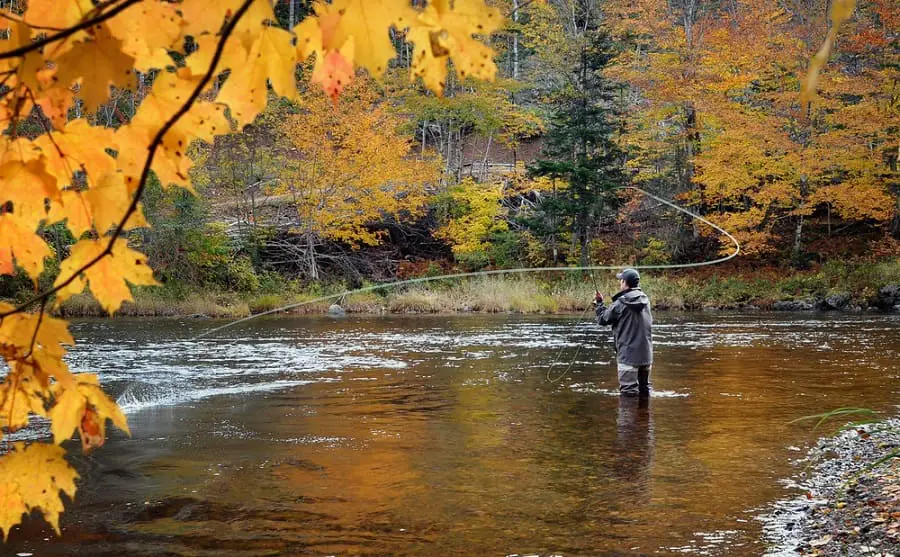
Swinging flies with a Spey rod and Spey line, has been a growing method of fishing for steelhead around the Great Lakes region.
One of my first experiences with Spey fishing was on the Pere Marquette River in Western Michigan.
Although Spey fishing is less common around the Great Lakes Region, West Coast steelhead and salmon anglers have been using this method for a long time. East Coast Atlantic salmon anglers have probably been using it even longer.
This steelhead fishing technique involves making a long cast across the river and allowing the current to swing your flies from one side of the river to the other.
Spey fishing is best done on mid to large rivers, where you can make longer casts and cover a lot of water.
To learn more about Spey fishing, check out Spey Fishing For Steelhead.
Drift Fishing
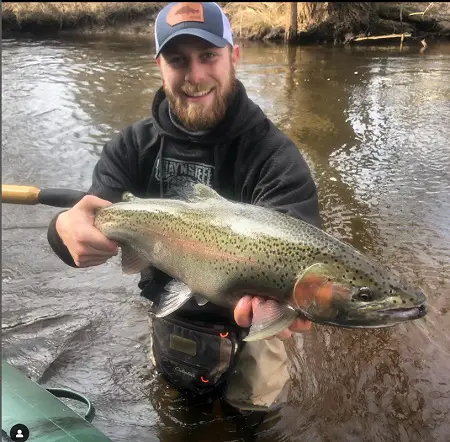
Drift fishing is a very effective method when fishing bigger deeper rivers with swift currents, but it’s also very tough to master since many anglers struggle with learning strike detection.
This fishing method simply means casting out your bait with the help of significant weight to help it sink to the bottom, and then allowing the bait and weight to drift and bounce along and across the bottom.
I discuss the best methods and setups, best baits, and types of water for successful drift fishing on my page, Drift Fishing For Steelhead.
Similar to drift fishing but better on smaller spots and in pocket water is a method known as Bottom Bouncing.
Plunking For Michigan Steelhead
Plunking for steelhead is an effective method just about any time, but it can be the best method when water levels are very high and when lots of fish are moving through the Rivers.
Plunking is used a lot at the river mouths, from piers, and the shorelines of the lake.
It’s also a perfect technique for beginner anglers or those with limited mobility.
This steelhead fishing method largely depends on the upriver migration and movement of steelhead since the bait is stationary and anchored to the bottom with a large weight. You basically cast out and then wait.
I discuss some best practices and a couple of setups for a successful plunking for steelhead in my article Plunking for Steelhead.
Lure Fishing
Lure fishing is popular and effective for Michigan steelhead.
I’m going to go out on a limb here and say that lure fishing for steelhead is done more in Michigan by both river guides and anglers than anywhere else around the Great Lakes.
Lures like spinners, spoons, crankbaits and plugs in sizes two inches to four inches are most effective.
For advanced lure fishing methods, covering water, depths, and best lures, check out Steelhead Fishing With Lures.
Jigs are another type of lure that can be very effective and are something you should try if you spin fish for steelhead. There are two ways to fish jigs for steelhead. One is to drift them under a float or with the drift fishing or bottom bouncing method.
The second method is to cast out and twitch jigs in a swimming or jigging motion. Jig fishing is not as popular as other methods for steelhead, but as my clients will tell you, it can be very fun and very productive. Learn more at Jig Fishing For Steelhead.
Other steelhead fishing methods include:
- Bobber Doggin – A new and unique West Coast method of bobber fishing. Find out if it’s good or bad.
- Back Trolling and Plug Fishing – An effective boat fishing method used in rivers for steelhead. This method is used more in Michigan than anywhere else in the Great Lakes region.
Best Baits For Michigan Steelhead
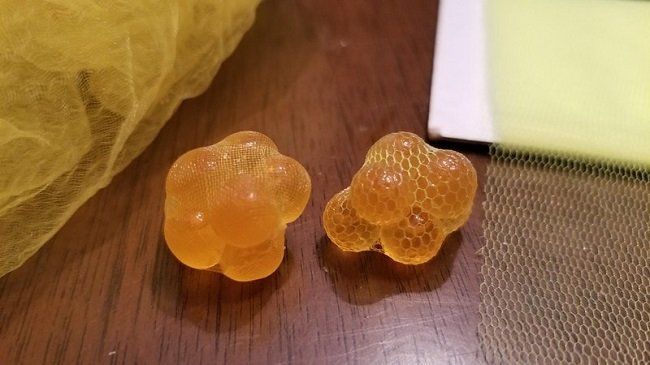
Be sure to rotate through your baits, sizes, and colors to determine what they want. Good guides will do this when the fishing slows on one bait.
The baits that Michigan river guides and veteran anglers use the most are:
- Eggs – Spawn sacs and Skein.
- Beads – Beads have become a staple for most good steelhead anglers and guides.
- Worms – 80% of the steelhead I have caught in the last few years have been on three to 4-inch plastic worms. Pink, red, and brown worms. See Fishing With Worms For Trout and Steelhead: 10 Guide Tips.
- Flies – Flies like nymphs are not just for fly fishing, and on busy rivers where everybody is using spawn sacs, flies can often be the best bait to use for pressured steelhead.
See my list of the 11 best baits and the colors and sizes that work best on my page, Best Baits For Steelhead.
Rules and Regulations For Steelhead Fishing Michigan
Before you’re allowed to target steelhead fish in Michigan public waters, you need a license if you are 17 years or older.
There are more regulations that anglers need to be aware of. You can learn more about how to get started here. Additionally, you can access Michigan’s fishing rules and regulations as published in the DNR’s Fishing Digest.
Michigan Steelhead Guide Services
Local guides have extensive knowledge of the rivers, the area, and the fish, so being side by side with an experienced and being coached by them can cut your learning curve by years.
Check out these recommended Michigan steelhead guides:
- John Weilinga in West Michigan at Get Bent Guide Service.
- Captain Alex Bialik at Fire Plug Charters.
If you have any questions or advice, let us know in the comments section below.
Tight Lines,
Graham

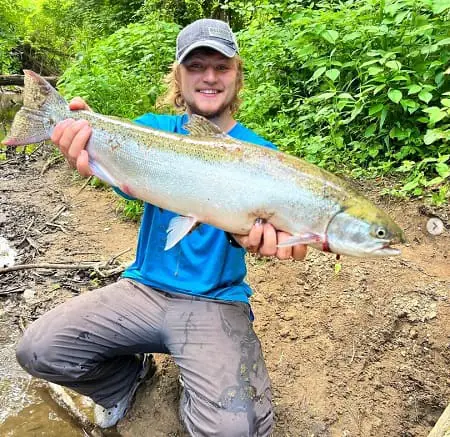
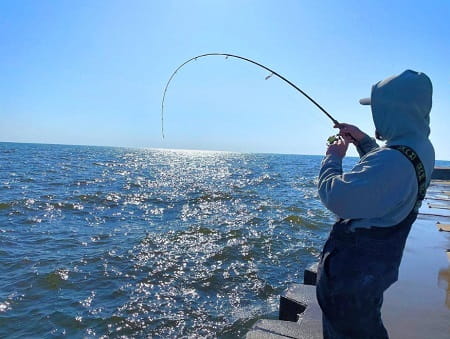
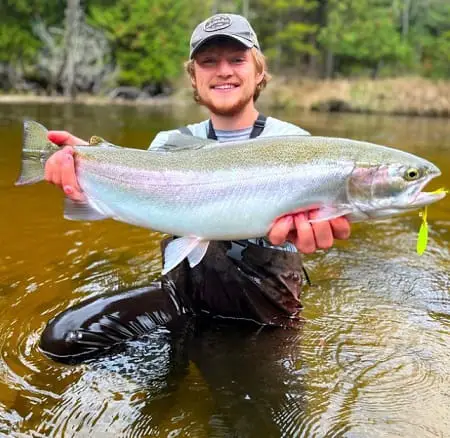
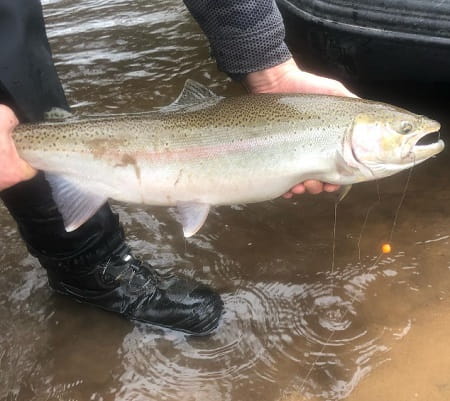
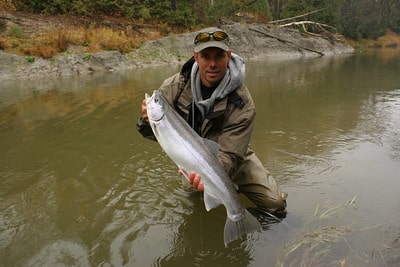
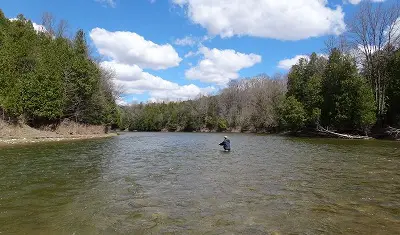
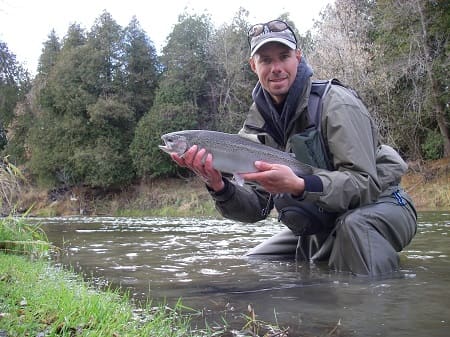
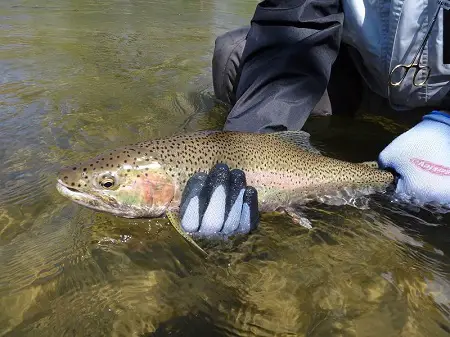

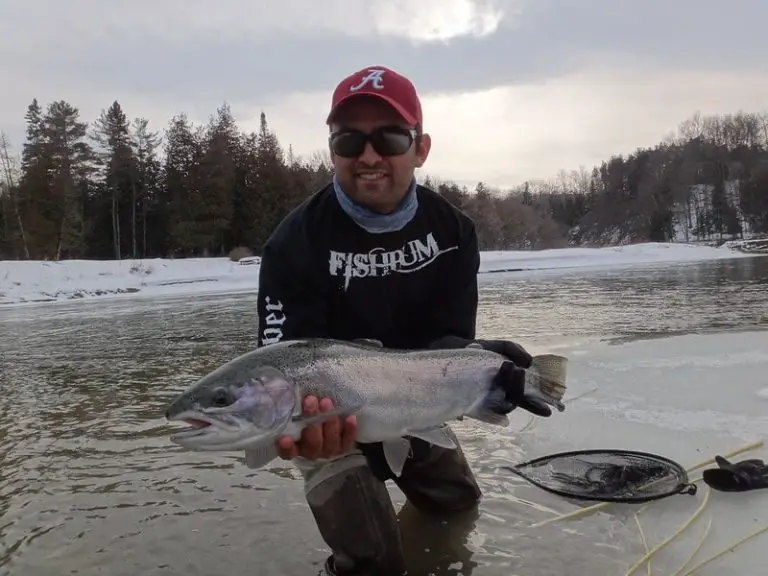
Graham can you please give us some information on your techniques centerpin float fishing a river bend?
Thank you for all the information you have put out to help us steelhead fishermen become better at what we love!
Hey Brent,
I have an article called Effectively Covering The Water When Float Fishing. The first image shows the line patterns in which I cover the water on bends.
In a nut shell, when fishing any type of spot with a float, I will cover it from the top down starting at the first drop. I will normally start running the drift lines in the area that should be the most productive, so that might be a bubble line or current seam, or a deep slot. I will then spread the float drifts out systematically to cover the entire spot from the inside out. And, I would cover potential snag areas or hard to get to areas last. Hope that helps.
Check out that article for more.
Good luck,
Graham
I fish the great lakes region and havent made my way around to plastic worms yet. You said you Catch 80% of your steelhead on a 3-4 inch worms. Are you putting them on a jig head? What colors are you using? Have you have much luck using the San Juan worm here? Also what conditions are you using them in? Thanks! You have helped me up my game in the steelhead world!
Hi John,
I’ve converted a lot of disbelievers and even some die hard spawn guys. Worms can be fantastic anytime.
I wacky rig my worms on a #8 or #10 egg type hook or spawn sac hook. I have done well drifting a worm under a float on a jig head however, I don’t normally use jig heads for worms. When fly fishing I use the San Juan worm and it’s also accounted for the majority of steelhead I and my clients catch.
Pink, red, and brown in that order works best for me most of the time, and I use them in water from gin-clear to steelhead green and even almost muddy.
Check out my article Fishing With Worms For Trout and Steelhead: 10 Guide Tips.
Good luck,
Graham